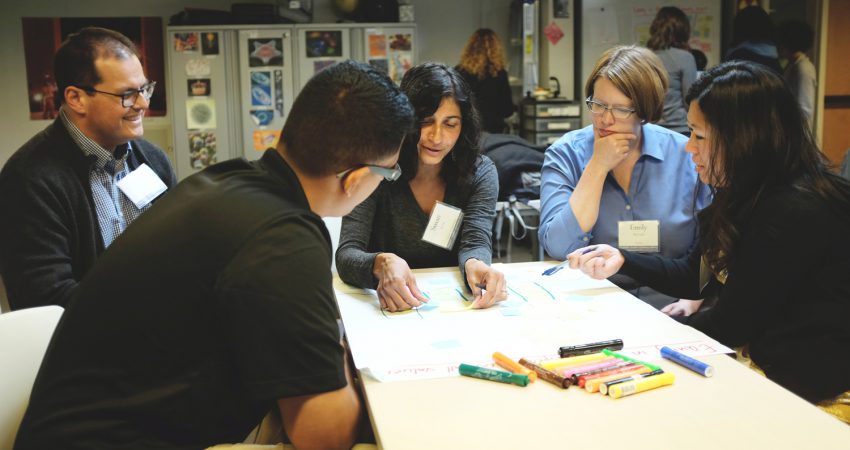
By Bronwyn Bevan - June 2015
PAPER CITATION
Bevan, B., Gutwill, J. P., Petrich, M. and Wilkinson, K. (2015), Learning Through STEM-Rich Tinkering: Findings From a Jointly Negotiated Research Project Taken Up in Practice. Science Education, 99: 98–120. doi: 10.1002/sce.21151
As Maker and Tinkering programs expand, educators are in need of new ways of noticing and capturing learning. In particular, because maker programs are so facilitation-heavy, and physically active, there is a need for ways for educators to monitor learning in process. In this paper, Bevan, Gutwill, Petrich and Wilkinson explore how jointly negotiated research led to new insights about what counts as learning in the context of STEM-rich tinkering in ways that can support formative, embedded, and naturalistic assessments.
The authors describe how they developed a jointly negotiated project in which researchers and practitioners jointly developed the research questions, identified non-obtrusive methods of data collection, and worked together to code and analyze data. Although particular roles were divvied up (such as practitioners implementing the programs and researchers doing the physical coding), reviews and validity checks were conducted jointly, with both researchers and practitioners discussing what counted as learning. This joint work led to the development of a new set of constructs that have been used to frame subsequent professional development programs by the educators.
The joint inquiries evolved from an initial research question (What does learning look like in informal settings?) to a final one (What are the learning dimensions that are evident in tinkering programs?). Through two years of regular meetings, the team developed a set of constructs organized around: Engagement, Intentionality, Social Scaffolding, and Understanding. Each of these was carefully defined based on evidence. For example, Engagement is not simply “doing” tinkering, but persisting in tinkering during moments of frustration, confusion, or completion, as seen on videotapes of learners interacting in tinkering activities.
The paper provides a framework with indicators of learning dimensions associated with tinkering. The authors write that the conclusions emerged through their joint efforts, and that the thinking and practices of both were positively affected through this joint work.
Theoretical Basis
The study is based on cultural historical theories of learning in which purposeful learning is supported and monitored through helping individuals and groups take on increasingly complex roles and tasks. Research attended to the ways in which learners were supported to develop meaningful purposes or motives; how they developed fluencies with tools and concepts, through using them in designing, building, and testing their projects; and how the social setting supported positive dispositions and new forms of participation. This theoretical lens meant that the study focused on the design and enactment of a rich social setting, and how facilitators and other learners acted to spark, deepen and sustain learning activities.
Implications for Practice
The study has two kinds of implications. The first is to provide an example of how informal settings can form and benefit from research+practice partnerships. The partnership and joint negotiation of the project led to new insights. The second is for studying learning through tinkering and making programs. The study includes design principles that make tinkering activities particularly engaging and intellectually rich. Additionally, the study suggests that attention be paid to the ways in which the social and physical environment as well as the facilitation within that environment, supports opportunities for learning.




